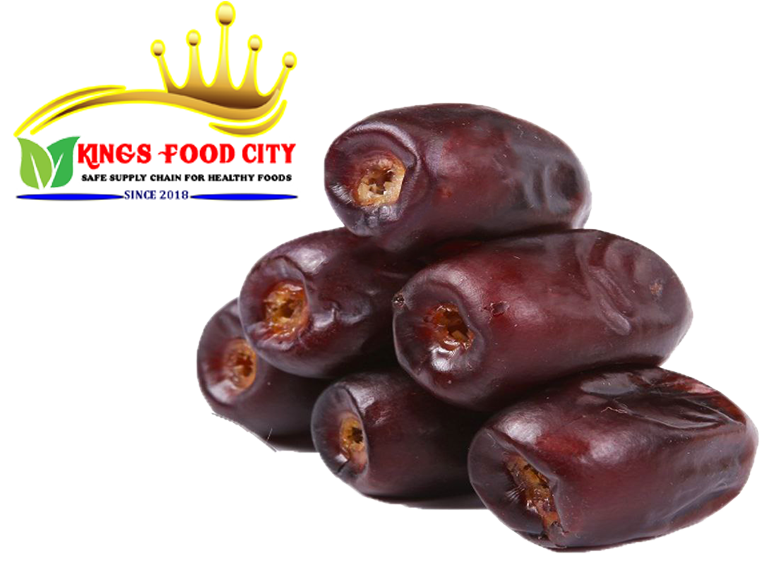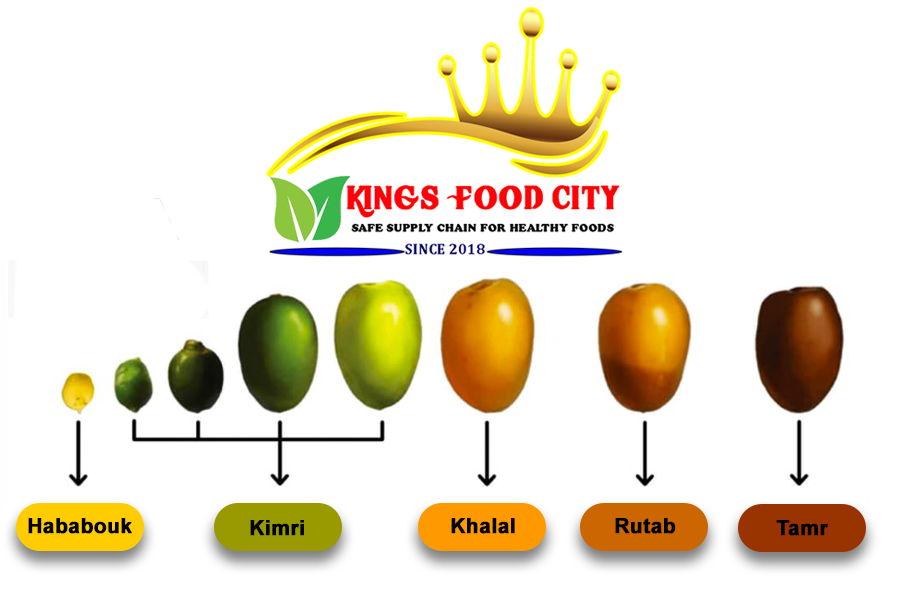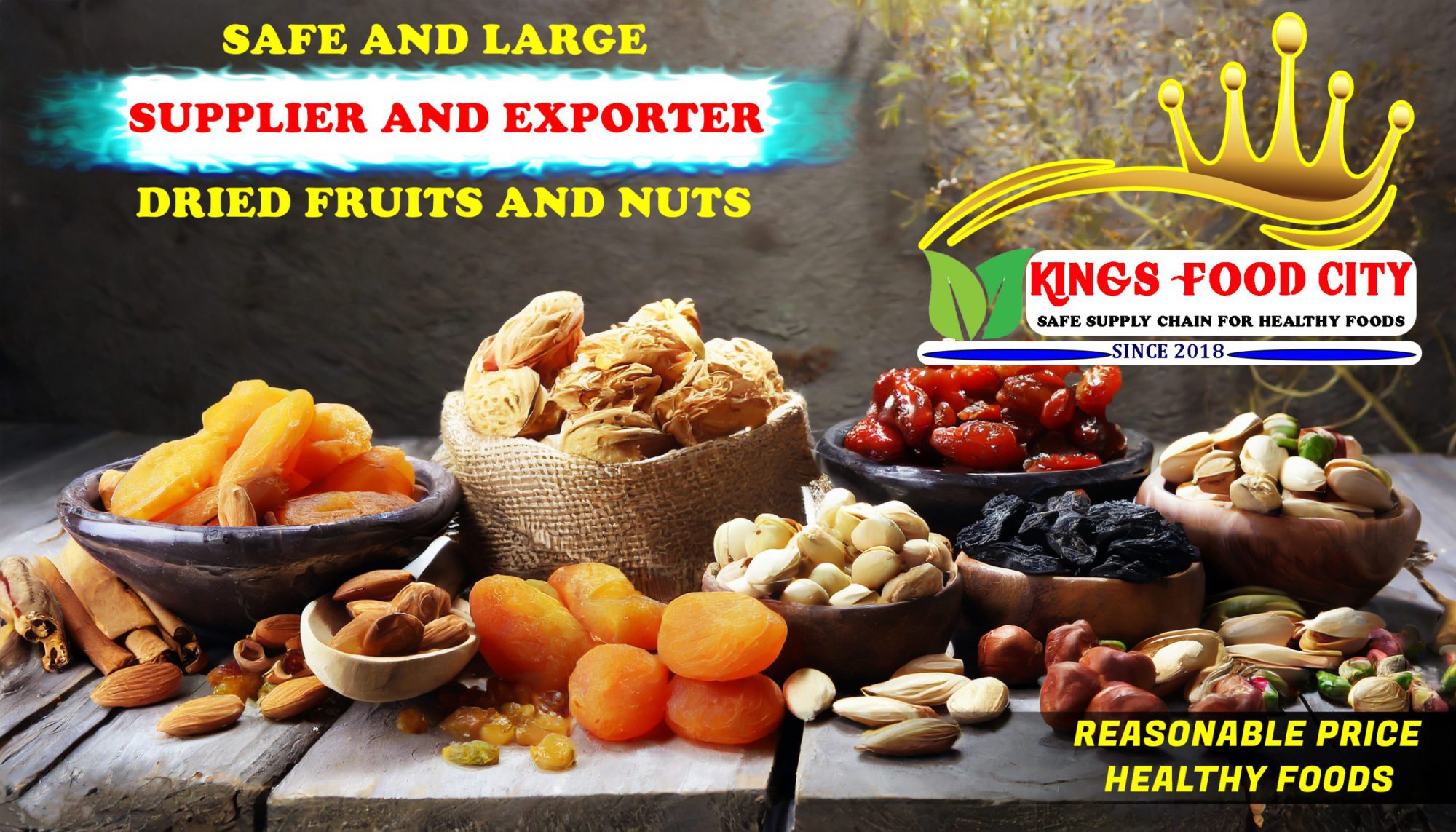Classifications and Growth Stages of Date Fruit
Five Growth Stages of a Date Fruit

The categorization of date fruits is a multifaceted process that takes into consideration their physical attributes such as shape, size, and color, all of which can undergo substantial changes as the fruits progress through their stages of maturity. These factors play a crucial role in assessing the overall quality of the dates. Date fruits typically undergo five distinct stages of development before they reach the point of ripeness. Each stage brings about discernible changes in the physical properties and flavor profile of the fruit. These stages are often denoted by different names, a practice that is deeply rooted in the cultural traditions of the country of origin.
Hababouk Stage
The initial phase of fruit development following fertilization lasts for approximately four to five weeks, during which time the fruit remains unripe. It is entirely enveloped by the calyx, with only one end of the ovary visible, and its weight does not surpass 1 gram.
Kimri Stage
It is alternatively referred to as the green phase, recognized as the most prolonged period in the maturation of date fruits. This stage typically spans from nine to fourteen weeks, with the duration varying depending on the specific type of date. During this phase, the fruit progresses to a solid green state, remaining inedible. The average weight of the date fruit during the Kimri stage is around 6 grams.
Khalal Stage
During the Khalal stage, the fruit's color shifts from green to either yellow or red, contingent upon the date variety. At this juncture, the nutritional composition of the fruit is approximately 2.7% protein, 0.3% fat, and 2.8% ash. Numerous date varieties are suitable for consumption during this phase.
Rutab Stage
This phase is also known as the soft ripe stage, lasting from two to four weeks, during which the upper part of the fruit starts to ripen, resulting in a soft texture, and the color begins to shift to brown or black, contingent upon the variety. Due to reduced moisture content, the fruit's weight decreases. The sugar content increases, leading to a sweet taste, making it the suitable stage for harvesting and storage.
Tamr Stage
It represents the phase of complete or ultimate ripeness. The date fruits reach full maturity, displaying a black or brown color. Dry dates have a hard texture, while Rutab dates are soft. The fruits experience significant moisture loss, resulting in ongoing low weight and safeguarding against spoilage or fermentation. The sucrose content in semi-dry and dry dates is approximately 50%.


